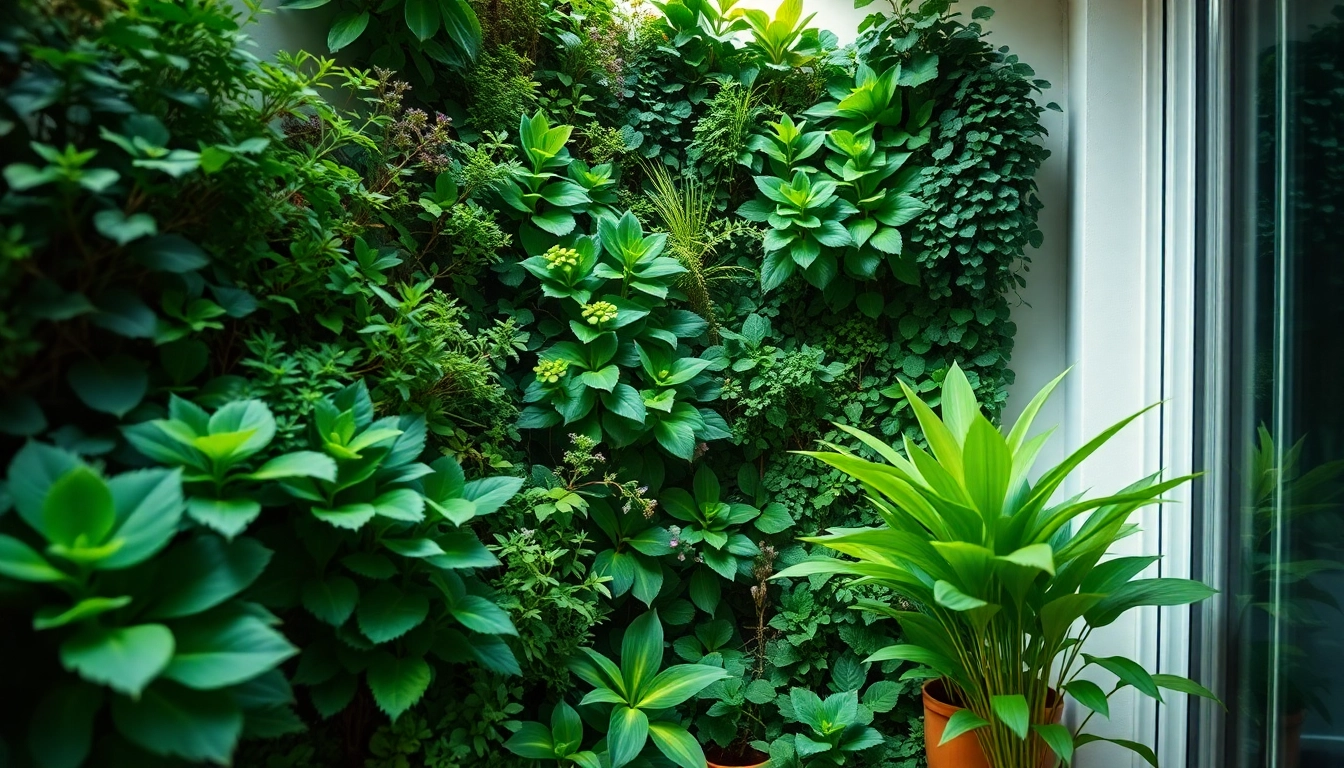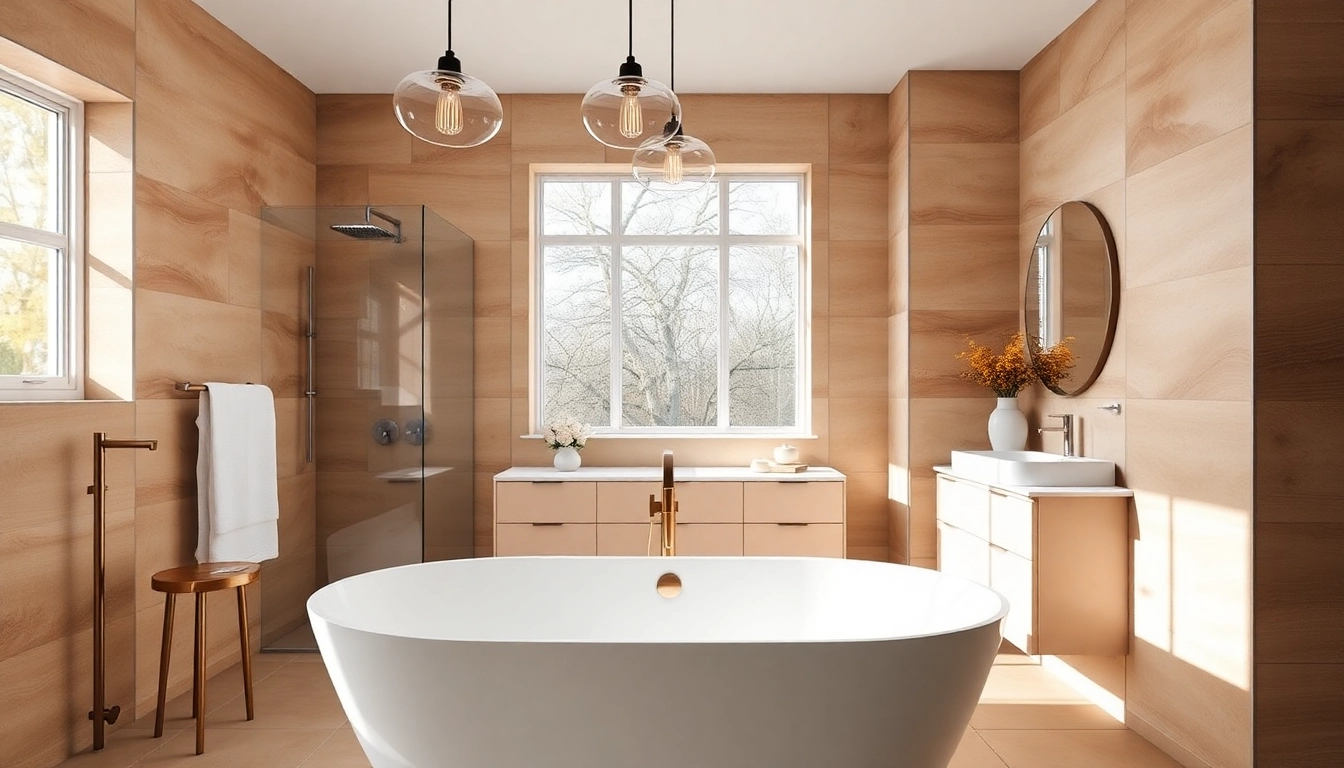Transform Your Space with Beautiful Vertikale Gärten: A Comprehensive Guide
Understanding Vertikale Gärten: Concepts and Benefits
What are Vertikale Gärten?
Vertikale Gärten, or vertical gardens, are innovative gardening solutions that utilize vertical space for growing plants. This modern gardening technique is increasingly popular in urban environments where space is limited. By using walls, fences, and other vertical surfaces, vertical gardens create a stunning display of greenery, ranging from flowering plants to herbs and vegetables. This concept not only beautifies spaces but also promotes sustainability by integrating nature into urban life.
Vertical gardens can be anchored to walls or built using freestanding systems. They can be designed as living walls that incorporate soil or hydroponic systems for watering plants. The versatility of vertikale Gärten enables anyone—from home gardeners to commercial landscapers—to cultivate vegetables, flowers, and foliage, turning mundane spaces into vibrant, green retreats.
The Benefits of Vertical Gardens for Urban Living
Urban living comes with its own set of challenges, including limited space, pollution, and a lack of green areas. Vertikale Gärten address many of these issues head-on:
- Space Efficiency: By utilizing vertical space, these gardens provide an opportunity to grow more plants in smaller areas. This is especially beneficial for city dwellers.
- Air Quality Improvement: Plants naturally filter the air, absorbing pollutants and releasing oxygen, leading to better air quality in urban environments.
- Temperature Regulation: Vertikale Gärten can help reduce the heat island effect commonly experienced in cities, lowering indoor temperatures and reducing energy costs.
- Stylistic Appeal: Vertical gardens enhance aesthetic appeal, creating inviting environments in residential, commercial, and public spaces.
- Noise Reduction: Green walls can act as sound barriers, dampening noise pollution from traffic and urban activity.
Common Materials Used in Vertikale Gärten
The materials used in vertical gardens can vary greatly based on design preferences, the type of plants, and environmental conditions. Here are some common materials:
- Geotextiles: These fabric materials allow for breathability while retaining soil and moisture.
- Modular Panels: These panels can be pre-planted and mounted on walls, providing an easy installation method.
- PVC and Plastic Tubs: Lightweight and weather-resistant, these are great for hydroponic setups.
- Wood and Metal Frameworks: Often used for more traditional designs, these frameworks provide structural support while adding to the aesthetic.
- Soil and Substrates: Specialized growing mediums, such as coconut coir or expanded clay pellets, help with drainage and plant health.
Designing Your Vertikale Gärten: Essentials and Inspiration
Choosing the Right Plants for Your Vertical Garden
Choosing the right plants is crucial for the success of any vertical garden. Factors such as sunlight availability, climate, and maintenance levels should guide your plant selection:
- Light Requirements: Evaluate the amount of sunlight your vertical garden will receive. Sun-loving plants like succulents, herbs, and certain flowering species do well in bright, sunny spots. Shade-tolerant plants, such as ferns or shade-loving flowers, are perfect for darker areas.
- Climate Considerations: Select plants that thrive in your local climate. For instance, tropical plants may struggle in cooler temperatures, while drought-resistant plants may excel in arid conditions.
- Maintenance Level: Consider how much time you have for upkeep. Some plants require less care, while others may need regular pruning or deadheading.
Layout and Design Ideas for Aesthetic Appeal
A successful vertical garden must balance form and function. Here are some design ideas that can enhance both aesthetic appeal and plant health:
- Layering Plants: Use a mix of plant sizes and growth habits to create depth. For example, taller plants can provide a backdrop for shorter ones.
- Color Coordination: Choose plants with varying flower colors and foliage to create a vibrant mosaic effect. For a monochromatic look, stick to shades of green or even a single color group.
- Textural Contrast: Combining smooth foliage with fuzzy or spiky plants can add interest. Consider varying leaf shapes and sizes for a more engaging design.
- Thematic Designs: Create a theme, such as a herb garden, aromatic garden, or even a floral display, to guide your plant selection and arrangement.
Using Color and Texture to Enhance Vertikale Gärten
The visual impact of vertical gardens can be greatly enhanced through the strategic use of color and texture. Here are some essential strategies:
- Seasonal Variation: Opt for plants that bloom at different times or change color with the seasons. This ensures your garden remains visually appealing throughout the year.
- Contrasting Textures: Create intrigue by juxtaposing coarse green leaves with delicate flowering species, or pairing glossy airplane plants with the matte finish of succulents.
- Color Progressions: Arrange plants in gradients that flow from light to dark colors or from warm to cool shades, creating visual harmony.
- Foliage Focus: Remember, not all aesthetics come from flowers; interesting foliage can be equally captivating. Plants with variegated leaves or unique shapes can become standout features.
Installation Processes for Vertikale Gärten
Step-by-Step Guide to Installing Your Vertical Garden
Installing a vertical garden can be a rewarding project if approached systematically. Follow this step-by-step guide for a successful installation:
- Choose a Location: Select a suitable location with adequate sunlight and easy access for maintenance.
- Gather Required Materials: Gather all necessary components such as panels, soil, plants, and tools.
- Create a Support Structure: If your chosen system requires a frame or backing, construct it securely to support the weight of your garden.
- Install the Growing Medium: Depending on your system, add the appropriate growing medium such as soil or hydroponic substrates.
- Plant Arrangement: Begin planting from the bottom to the top to prevent soil and debris from falling onto lower plants as you work.
- Water and Fertilize: Initially provide adequate moisture and nutrients to encourage strong root establishment.
- Monitor and Maintain: Regularly check for water levels, pests, and the overall health of your plants.
Tools and Equipment Needed for Setup
Successful installation of vertical gardens requires a few key tools and equipment:
- Drill and Anchors: For securing panels or support structures to walls.
- Soil Scoops and Trowels: Handy for filling the planting pockets.
- Watering Can or Hose with Spray Nozzle: Essential for watering plants during and after installation.
- Gardening Gloves: Protects hands while working with soil and plants.
- Measuring Tape: To ensure accurate placement and spacing.
Common Mistakes to Avoid When Installing
Even the best-laid plans can run into hiccups while installing vertical gardens. Here are some common mistakes to avoid:
- Inadequate Light Assessment: Ensure your chosen location offers sufficient light for the selected plants.
- Poor Watering Setup: Avoid insufficient drainage which can lead to root rot. Ensure your system allows water to flow freely without pooling in the base.
- Overcrowded Planting: Give plants room to grow; overcrowding can lead to competition for resources and poor air circulation.
- Neglecting Maintenance Needs: Familiarize yourself with the maintenance requirements of your selected plants. Some may require more care than others.
Maintenance Tips for Thriving Vertikale Gärten
Watering and Nutrient Requirements for Success
Proper watering and fertilization are fundamental to the health of any vertical garden. Here are strategies to ensure your plants thrive:
- Consistent Watering Schedule: Establish a regular watering routine depending on your plants’ requirements, usually daily or every other day for hydroponic setups.
- Use Quality Fertilizers: Incorporate slow-release fertilizers or liquid nutrients as per the recommendations for your specific plants.
- Monitor Moisture Levels: Maintain an appropriate balance; neither soggy nor dry soil is ideal. A moisture meter can help.
- Adjust Based on Season: As growing conditions change with the seasons, so should your watering and fertilization regime. For example, plants may need more water during the warmer months.
Pest Management Strategies for Vertical Gardens
Pest infestations can threaten the health of your vertical garden. Here are tips for effective pest management:
- Regular Inspection: Frequently check plants for signs of pests or disease, allowing early intervention.
- Encourage Beneficial Insects: Introduce ladybugs, lacewings, or other natural predators that can control pest populations.
- Natural Pest Deterrents: Use organic solutions like neem oil or insecticidal soap to minimize pesticide use.
- Maintain Plant Health: Healthy plants are more resilient. Ensure adequate sunlight, water, and nutrients to strengthen plants against pests.
Seasonal Maintenance Duties for Optimal Growth
Maintaining a vertical garden requires specific tasks throughout the seasons to promote optimal growth:
- Spring: This is the time for planting, so prepare your garden by cleaning it, checking for diseases, and introducing new plants.
- Summer: Monitor watering closely and prune plants that have outgrown their space. Check for pests and act promptly.
- Fall: Begin preparations for cooler weather by re-evaluating your plants and possibly bringing sensitive species inside.
- Winter: Focus on reducing watering frequency for dormant plants and ensuring that your system can withstand cold temperatures.
Inspiring Vertikale Gärten Success Stories
Case Studies of Amazing Vertical Gardens Worldwide
Globally, vertical gardens have transformed urban environments, helping cities incorporate more green spaces:
- Green Wall at Bosco Verticale, Milan: This stunning example features two residential towers with densely planted balconies, promoting biodiversity and improving local air quality.
- Living Architecture Project, UK: Incorporating a collaborative effort between architects and horticulturists, the project showcases numerous methods for integrating vertical gardens into architecture.
- Singapore’s Vertical Gardens: Known for its urban greening initiatives, Singapore features vertical gardens throughout its cityscape, enhancing both beauty and the local ecosystem.
Interviews with Vertical Garden Enthusiasts
Insights from vertical garden enthusiasts provide a wealth of knowledge and inspiration:
- Jane Smith, Urban Gardener: “Vertical gardening has changed the way I interact with my environment. I can grow food right outside my door, and it’s practical as well as beautiful.”
- John Doe, Landscape Architect: “The integration of plants into buildings is where the future lies. Vertical gardens are a key part of sustainable urban design.”
- Emily White, Hydroponics Expert: “Hydroponic vertical gardens can offer maximum yield in minimal space. It’s an exciting field that combines technology and nature.”
Lessons Learned from Successful Vertikale Gärten Implementations
Throughout the world, there are key takeaways from successful vertical garden implementations:
- Customization is Key: Tailoring designs to fit specific locations and climates yields the best results.
- Community Engagement: Involving residents in urban vertical garden projects fosters a sense of ownership and community pride.
- Research and Adapt: Continuous learning about plant needs, pest control, and local conditions is essential for sustained success.














Post Comment